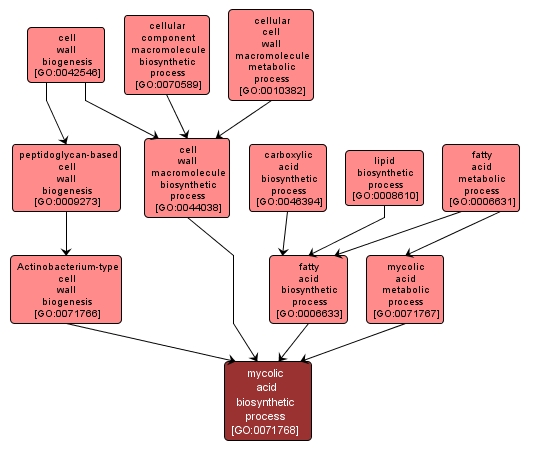GO TERM SUMMARY
|
| Name: |
mycolic acid biosynthetic process |
| Acc: |
GO:0071768 |
| Aspect: |
Biological Process |
| Desc: |
The chemical reactions and pathways resulting in the formation of mycolic acids, beta-hydroxy fatty acids with a long alpha-alkyl side chain. |
Synonyms:
- mycolic acid formation
- mycolic acid synthesis
- mycolic acid anabolism
- mycolic acid biosynthesis
- mycolate biosynthetic process
|
|

|
INTERACTIVE GO GRAPH
|














